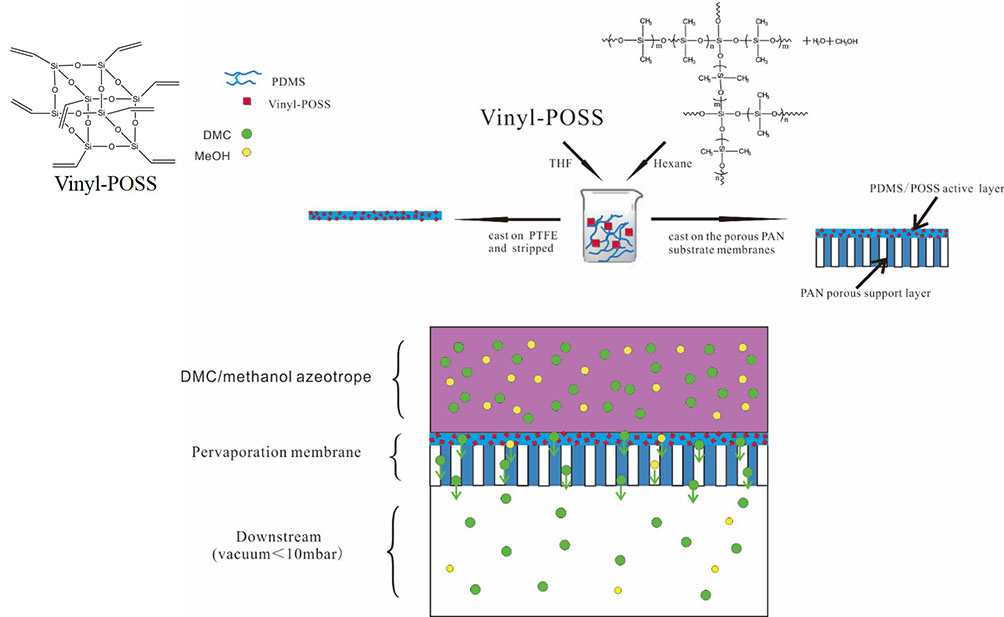
A composite active layer was prepared by cage type polyhedral oligomeric silsesquioxane (POSS) and polydimethylsiloxane (PDMS) and was combined with polyacrylonitrile (PAN) porous support layer to form pervaporation (PV) membrane, which was used in the PV membrane separation of dimethyl carbonate (DMC)/methanol(MeOH) azeotrope. The active layer of PDMS/POSS was characterized by using X-ray diffraction, thermogravimetry, and swelling test, and the PV membrane was characterized by using scanning electron microscope and contact angle measurement. The permeability flux, separation factor and swelling/diffusion selectivity of the composite membrane were evaluated by PV test. Results show that POSS interferes with the ordered structure of PDMS, reduces the contact angle of the membrane, and is conducive to the preferential penetration of DMC. The separation flux of DMC was greatly increased in the PV process of DMC/MeOH azeotropic mixture. Moreover, the excellent swelling selectivity of PDMS/POSS active layer kept the separation factor at a high level. The novelty of this research is that POSS nanoparticles modified PV composite membranes, which can be used to separate DMC/MeOH azeotropic mixtures with good results. The maximum permeation flux of composite membrane M-3 was 4.9 kg/m2h at the operating temperature of 50 ℃, and the separation factor was 2.31, which was higher than data reported in literature.
Total file downloads: 10